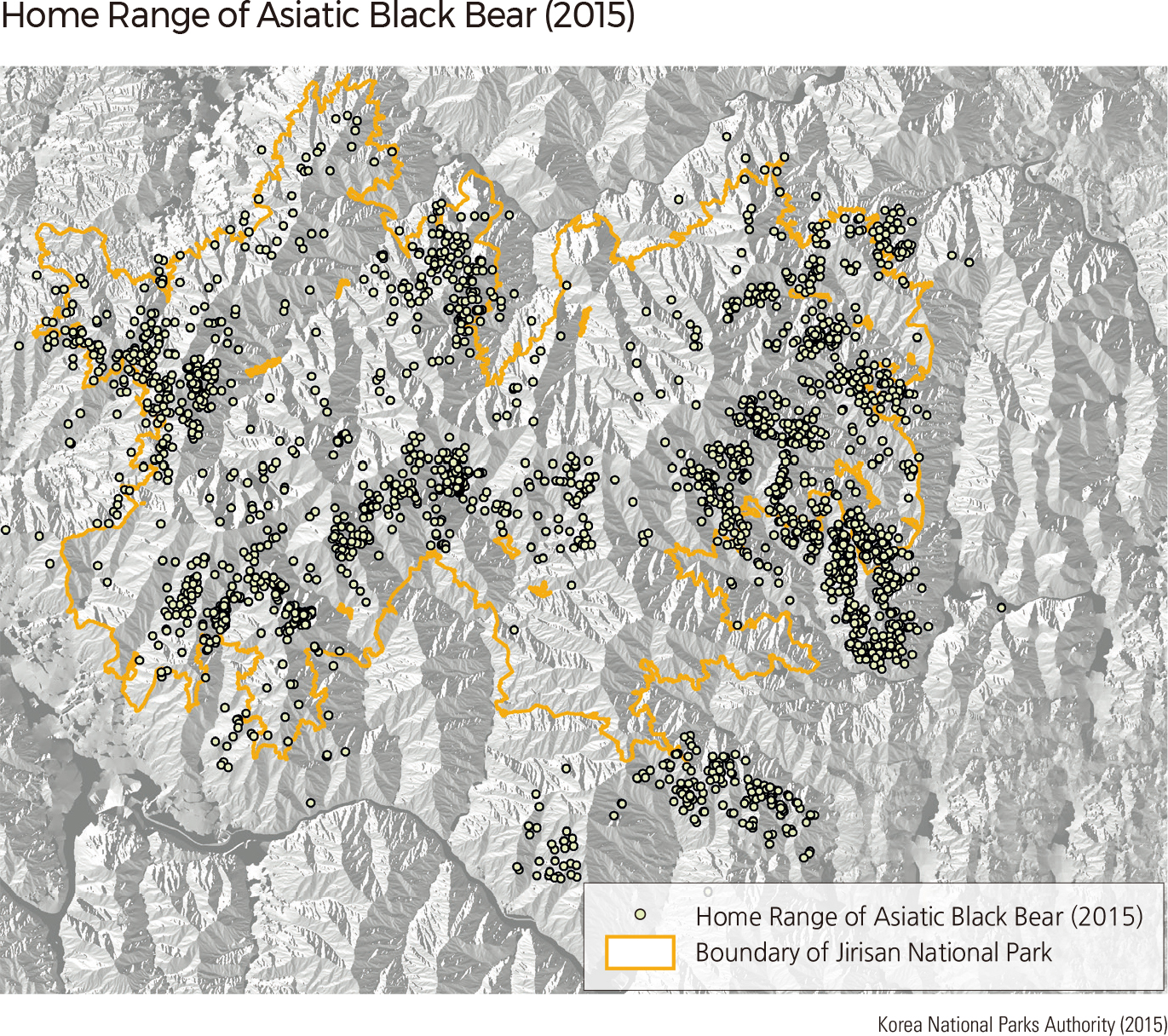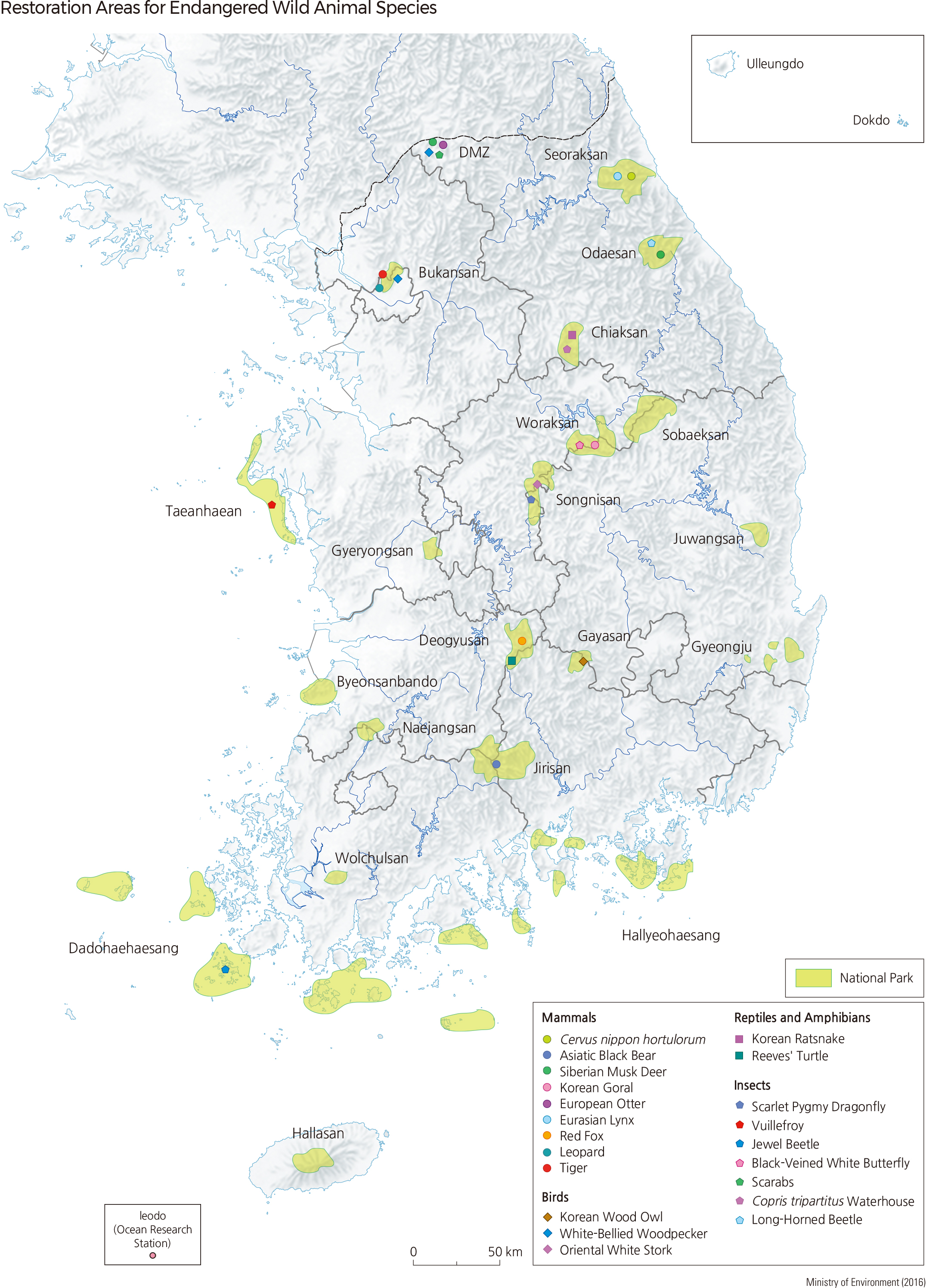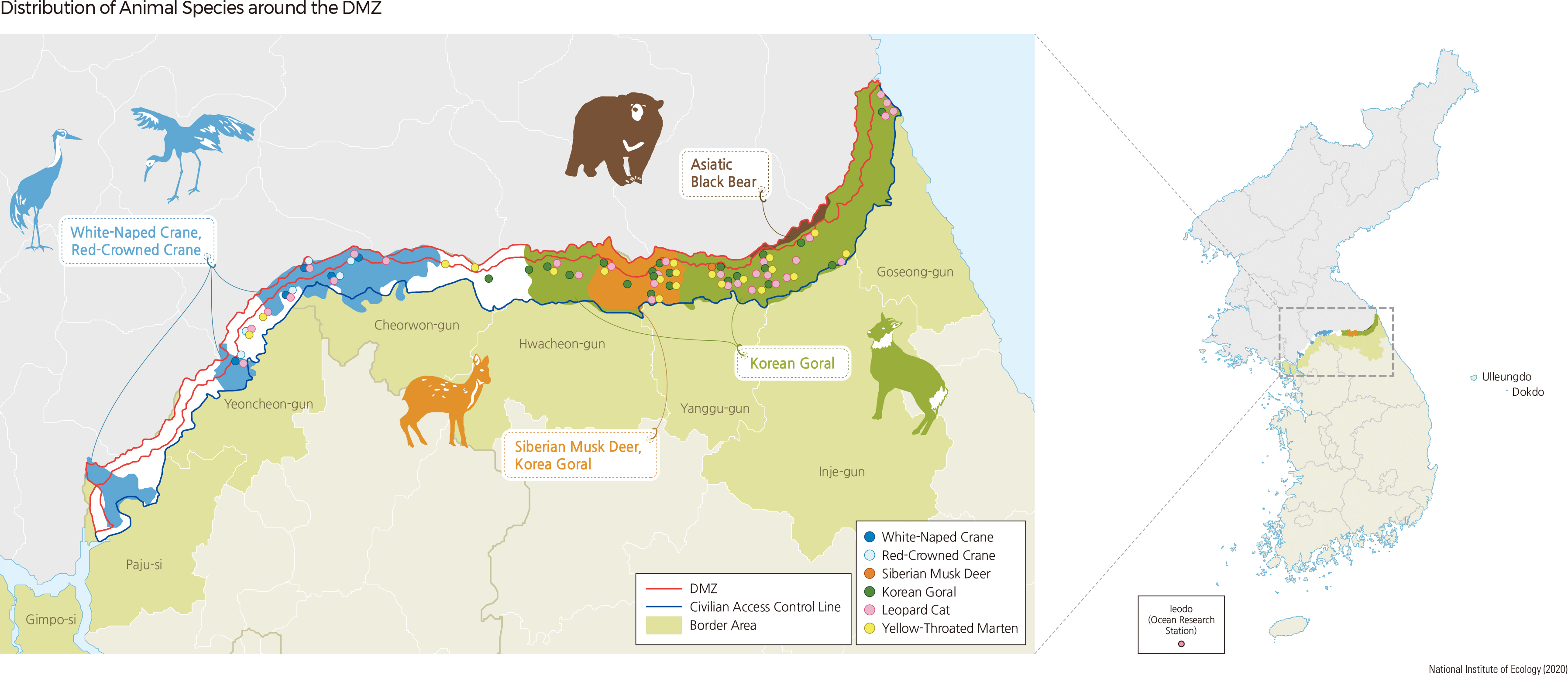English II 2020
Korea is currently pursuing restoration of Endangered Wildlife, such as the Asiatic Black Bear, Musk Deer, Oriental White Stork, Black Shiner, Bull-head Torrent Catfish, and Wind Orchid. Plans for restoration of these Endangered Wildlife have been carried out.
The Asiatic Black Bear once occupied virtually all mountainous areas stretching across major mountains such as Seoraksan, Odaesan, and Jirisan. However, habitat destruction and overhunting brought about a sharp decline in its population. In 1982, the bear was classified as a Natural Monument to be protected from further endangerment. Korea's first measure for the restoration of this species began in 2004 when 6 Asiatic Black Bears were translocated from Russia to Korea's Jirisan National Park. In 2005, 8 bears from North Korea and 6 bears from Russia were further released into the area. As of 2016, there are a total of 44 bears living in Jirisan National Park. In September of 2015, a three-year-old bear was captured in the park, proving that the species has succeeded in natural propagation.
The Oriental Stork is listed as an Endangered Wildlife by the IUCN as it only has a remaining population size of 5,000 in the Amur River basin of Russia. Restoration efforts for the stork initiated in 1996 when 2 Juvenile Storks from Russia and two male storks from Germany were delivered to Korea. In April of 2002, the species succeeded in breeding for the first time in an artificial environment. The eco-institute for Oriental Stork of the Korea National University of Education is currently raising 85 storks, while 77 individuals inhabit the Yesan Oriental Stork Park. The storks at the restoration institute are in the process of undergoing survival training to be released into the wild.
The DMZ (Demilitarized Zone) region attracts the world's attention for its well-conserved natural ecosystem due to the strict prohibition of civilian activities. This region has high biological diversity of mammals and birds, along with high density of Endangered Wildlife and Natural Monument species, such as the Asiatic Black Bear, the Siberian Musk Deer, Korean Goral, and the Eurasian Otter. Streams and wetlands are well developed around the DMZ, displaying diverse and abundant species of fish.
The western region of the DMZ is inhabited by wetland birds, such as the White-naped Crane and Black-faced Spoonbill. The central region of the DMZ is a wide plain that provides wintering areas for the Red-crowned Crane. The eastern mountainous region is inhabited by the Siberian Musk Deer and Korean Goral.
The Red-crowned Crane visits Cheorwon-gun, Paju-si, Ganghwa-gun, and Yeoncheon-gun for wintering. The Siberian Musk Deer and Korean Goral inhabit the eastern rocky mountainous region of the DMZ. The Siberian Musk Deer is especially low in population, inhabiting only the regions of Hwacheon-gun and Yanggu-gun. |


